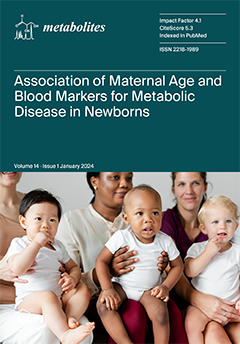This study was conducted to explore the potential effect of
Yucca schidigera extract (YSE) on the metabolism of beef cattle. Thirty Angus crossbreed steers were selected, with an initial mean body weight of 506.6 ± 33.3 kg, and assigned to two treatments: a
[...] Read more.
This study was conducted to explore the potential effect of
Yucca schidigera extract (YSE) on the metabolism of beef cattle. Thirty Angus crossbreed steers were selected, with an initial mean body weight of 506.6 ± 33.3 kg, and assigned to two treatments: a diet with no additives (CON group) and a diet supplemented with 1.75 g/kg of YSE (YSE group) (on a dry matter basis). The experiment lasted for 104 days, with 14 days for adaptation. The results showed that adding YSE could significantly improve the average daily gain (ADG) from 1 to 59 d (15.38%) (
p = 0.01) and 1 to 90 d (11.38%) (
p < 0.01), as well as dry matter digestibility (DMD) (0.84%) (
p < 0.05). The contents of alanine aminotransferase, aspartate aminotransferase, and bilirubin and the total antioxidant capacity were increased and blood urea was reduced in the YSE group, compared to the CON group (
p < 0.05). Both the glycerophospholipids and bile acids, including phosphocholine, glycerophosphocholine, PC(15:0/18:2(9Z,12Z)), PE(18:0/20:3(5Z,8Z,11Z)), PE(18:3(6Z,9Z,12Z)/P-18:0), LysoPC(15:0), LysoPC(17:0), LysoPC(18:0), LysoPC(20:5(5Z,8Z,11Z,14Z,17Z)), deoxycholic acid, glycocholic acid, and cholic acid, were upregulated by the addition of YSE. In summary, YSE may improve the ADG by increasing the blood total antioxidant capacity and glycerophospholipid synthesis, maintaining steers under a healthy status that is beneficial for growth. Furthermore, YSE may also increase the expression of bile acid synthesis, thereby promoting DMD, which, in turn, offers more nutrients available for growth.
Full article






